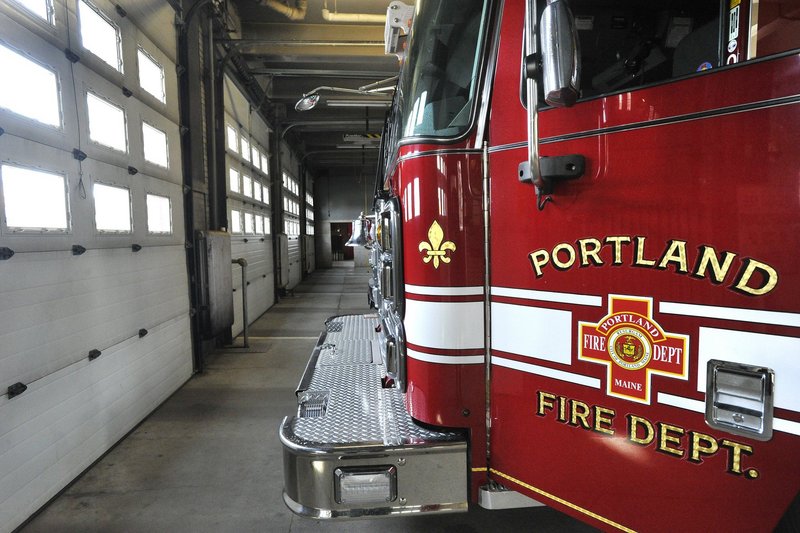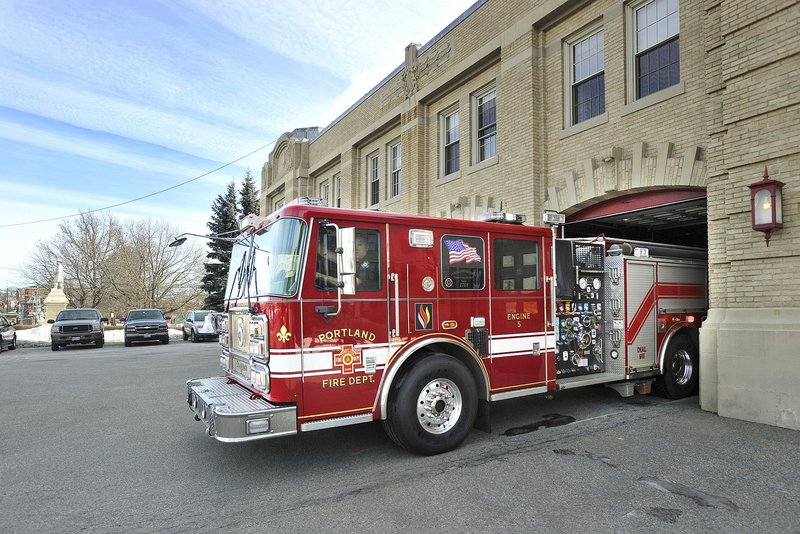PORTLAND – Adding nearly 40 firefighters to the Portland Fire Department, as proposed in a consultant’s study, could cost more than the $1.8 million in overtime spending that the new jobs would offset.
That’s making some city councilors skeptical about the study.
“You can be sure all of us are going to be zeroed in on that one,” said Councilor Cheryl Leeman. “I believe (the consultant) certainly needs to explain that.”
Maryland-based Public Safety Solutions Inc. was paid $39,000 for a comprehensive review of the department, partly to rein in overtime costs, which have topped $1.2 million in each of the last eight years.
Its report, released Wednesday, includes nearly 170 recommendations, including 13 to reduce overtime. The City Council will review the report Monday with Leslie Adams, president of Public Safety Solutions.
Among the consultant’s suggestions to reduce overtime is a formula to meet minimum staffing levels for the department’s apparatus. That would call for 269 people — about 40 more than the department now has.
Fire Chief Jerome LaMoria said Thursday that he will not comment on specific recommendations until the report is publicly presented to the council.
LaMoria, who received a draft of the report on March 18, said he was still working his way through the 523-page document. He compared it to a train that will take the department from where it is today to where it should be in the future.
“It allows me to lay the tracks in the right direction,” LaMoria said. “Now, my job is to be the engineer of that train to make sure we get on board and we make all our stops at a pace we can manage.”
Most city councilors who were contacted Thursday had not reviewed the report and did not want to comment on its recommendations.
Councilor Edward Suslovic, who leads the council’s Public Safety Committee and was a lead advocate for the study, said the recommendation to add staffing to a department that is already among the largest for the population it serves, regionally if not nationally, isn’t explained adequately.
The consultant must justify the need for the current staffing before recommending hiring more people, he said.
“That, to me, is the central question,” said Suslovic, who said he was still reading the report. “In my first read of the report, I was not able to find an answer to that question clearly.”
City Councilor John Coyne, however, said he was intrigued by the staffing recommendation, which he said he would support if it would decrease overtime and create a healthier force.
“If hiring more guys leads to a healthier workload for these guys, that’s a win-win,” Coyne said. “It will be interesting to see how that works out financially.”
The consultant suggests a staffing formula that would lead to the hiring of nearly 40 firefighters because it would increase staffing for each piece of equipment.
For example, only three Portland firefighters now staff an engine, while the industry standard is four per engine.
Adding firefighters and implementing suggestions that include better methods for tracking sick leave and punishing abuse could reduce overtime expenses by as much as 80 percent, according to the report.
However, the consultant says the city should analyze the costs and benefits of increasing staffing and the actual costs for overtime, which last year exceeded $1.8 million.
Hiring an additional 40 firefighters would cost at least $1.25 million, not including benefits.
In budgeting for public safety employees, 30 percent is added to the salaries to account for benefits, said city Finance Director Ellen Sanborn. That puts the minimum cost at $1.88 million a year.
The staffing formula used by the consultant accounts for “off-the-floor” time — including sick time, vacations, training and injuries — determined to average 628 hours a year in Portland.
That means 5.62 employees are needed to staff one position on a 24-hour basis, the report says.
Coupled with the need to increase staffing for each piece of equipment, the total force should be 269 people, the consultant concludes.
John Brooks, president of the firefighters union, said this is the first time he has seen such a staffing formula.
However, he said the report shows that the city is getting good service for the cost. While Portland’s staffing per capita is above average, the per capita costs of the department are within a common industry standard.
“It sounds to me the city is getting a good deal,” Brooks said. “That points toward efficiency.”
The report commends the department’s emergency medical services, noting that 74 percent of the department’s 15,000 calls for service in 2012 were EMS-related. The city’s EMS budget is expected to produce a surplus of $600,000, the report says.
It is common for Portland to send both a fire truck and an ambulance to an EMS call; the consultant recommends sending fire trucks only for the most severe cases.
The report notes a “perceived and real animosity” between ambulance and fire engine crews, which dates back to an incomplete merger of the groups in 1997.
While most of the work in the department is related to EMS, a perception remains that ambulance workers are held in lower regard than firefighters, even though they are trained in fire suppression.
Suslovic said the report doesn’t fully examine alternative models for EMS service. He said comparable cities are moving toward contracting with private providers or hospitals, to provide quality service with fewer staff members.
“If that’s 80 percent of the Fire Department’s workload, to me that’s a pretty central issue to examine,” he said.
Brooks and Suslovic rarely agree on issues relating to Fire Department staffing, but they agree on one point: The consultant must be prepared to explain his recommendations in greater detail than the report does.
“He’s got to back up a lot of things,” Brooks said.
Randy Billings can be contacted at 791-6346 or at:
rbillings@pressherald.com
Twitter: @randybillings
Send questions/comments to the editors.




